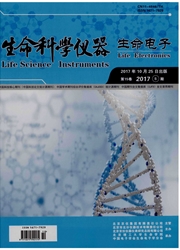

 中文摘要:
中文摘要:
SUMO分子介导的可逆的蛋白质修饰对真核细胞的生命活动至关重要。但由于生物体内SUMO化修饰水平非常低,蛋白质SUMO化位点的鉴定面临很多困难。目前对蛋白质SUMO化修饰位点的分析主要是基于生物信息学预测结合氨基酸突变的生物化学方法和质谱鉴定技术为主。一方面通过已知的SUMO修饰位点的修饰特点及SUMO化修饰形式的共性,采用计算机算法预测SUMO修饰底物的位点,利用定点突变技术鉴定其确切位点。另一方面应用基于质谱的技术并结合试验的方法明确底物分子的SUMO化修饰位点。这些方法无疑对蛋白SUMO化修饰位点的鉴定提供了可行的技术手段。但对于真核细胞生物来说,经酶解后留在SUMO化修饰肽段上的C端过长是造成测定具体SUMO化修饰位点的最大障碍。因此发展更加灵敏,快速,大规模的鉴定SUMO化修饰位点的新方法将为发现新的潜在的SUMO修饰底物的成为可能。
 英文摘要:
英文摘要:
The SUMO molecule mediated-posttranslational modification(PTM) is important for cellular processes in eukaryotic cells. However, the identification of protein SUMO modification has faced several challenges due to the relatively low abundance of protein SUMOylation. Now the approaches for SUMOylation identification mainly include the bioinformatics coupled with the amino acid site-directed mutagenesis and mass spectrometry(MS)-based proteomics analysis. We can predict protein SUMOylation sites by the analogue computation bioinformatics, which is further verified by amino acid site-directed mutagenesis. In addition, the variable SUMO modification sites of target proteins are identified by MS-based techniques combined with the biochemical experiments. These methods are all feasible in the identification of SUMO modification site. However,due to the longer C-terminal peptides from the SUMOylated protein after trypsin digestion in eukaryotic cells, it is not easy to clearly identify SUMO modification sites. Therefore it is necessary to develop more sensitive, efficient and high throughput methods to identify protein modification sites and find new SUMOylation substrates.
 同期刊论文项目
同期刊论文项目
 同项目期刊论文
同项目期刊论文
 期刊信息
期刊信息
